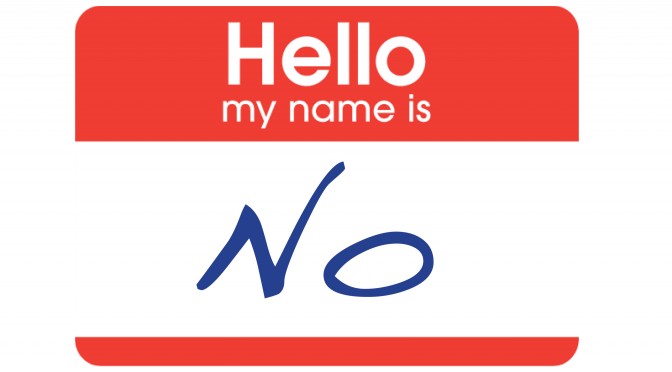 How well do you know the term, “no”? Do you say it often enough? I don’t. In fact, this blog was due to go up on Tuesday of this week, but I said “yes,” to too many other things, which made it impossible to meet that deadline.
How well do you know the term, “no”? Do you say it often enough? I don’t. In fact, this blog was due to go up on Tuesday of this week, but I said “yes,” to too many other things, which made it impossible to meet that deadline.
The best way to make friends with no is to understand what your yes really means. If you say yes, when you would rather say no:
• You aren’t likely to enjoy doing what you said yes to
• You don’t have that time to do something else you wanted to do
• You can become overcommitted and stressed out
But saying no isn’t easy. For one thing, you’re a good person and you would probably like to help. No one wants to alienate others or be seen as being rude or selfish, but a no answer can have those results. You may not like conflict either, and sometimes no can create an uncomfortable environment. Another reason telling someone no can be hard is that it might mean you won’t be asked to assist at some point in the future when you have the time and desire to say yes.
Overcome the Barriers
All of these obstacles to saying no are why too many of us too often say yes when we really mean no. So how can we change that?
Get your priorities straight. Is this possible new obligation important to you? If not, just say no.
Be realistic about the time commitment. If it won’t take you long and you have the time, maybe you can afford to say yes? But be honest about what you have time to do.
Stop and think. Don’t blurt out an answer right away. Tell them you need to look at your schedule and that you’ll get back to them.
5 Great Tips On How to Say No (Plus a link to a cat video!)
Now that you’ve rationally assessed your ability to take on a new responsibility, what do you do? Obviously if you have concluded it’s doable, saying yes will be easy. But if you know no is the right answer, how do you break the news?
1. Just Do It — Say it. Say, “no.” It’s a powerful word and much better than using a wishy-washy phrase like, “I don’t think so” or “not this time.” And in case you think you can’t do it, check out this video of a cat saying no. If he can do it, so can you!
2. Mean It, But Don’t be Mean — I had an elementary teacher who could say the toughest things in the nicest way so that no one ever felt bad. Think firm, but polite. Bring out your inner teacher.
3. Get to the Point — Say no, and say why you’re saying no, but don’t belabor the point. Short and sweet is best. Rationalizing or justifying why you’re saying isn’t necessary.
4. Tell the Truth — Even if the person making the request isn’t a close friend, colleague or family member, they deserve your respect. Be honest about why you’re saying no.
5. Stick to Your Guns — Once you’ve gotten up the courage to say no, don’t waffle. Whether they pout, pose the question another way or try to counter your “why,” just repeat your no — as often as they need to hear it. Maintain the firm and polite tone the whole time.
Now you have some tools and rules to step up and start saying no more often. This should help bring some life balance. And be honest. What is the worst thing that can happen if you say no? Will someone hit you? Will you lose a friendship or a job? It’s not likely if you follow the steps above. Take the time to prioritize and then be honest and firm about why you’re saying no. People will understand and respect your decision.
So the idea is: get to know no. You’ll likely be healthier and happier for it. And if you have more good suggestions to help others say no, please leave a comment below.

